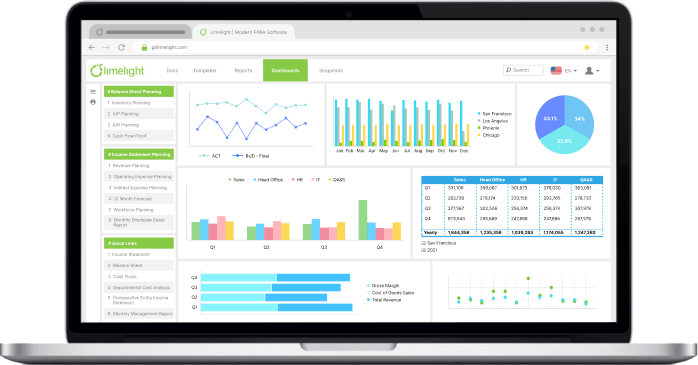Financial Planning & Analysis
How Finance Teams Can Speed Up Monthly Reporting
By Duncan Morrison |
Published: March 16, 2022
By Duncan Morrison |
Published: March 16, 2022
Monthly reporting is a good way for companies to stay on top of how they are performing and structured. Its uses for strategic planning are abundant and provide real value to organizations.
Regardless of the intended audience, monthly reporting is how organizations can understand and tell the story of what is happening inside the company and the structure of its foundations. Monthly reporting, however, has room for further improvement, to enhance its value for an organization by being real-time. Being able to create reports and monitor performance more efficiently can give finance teams time to write an accessible narrative for their recommendation. C-suite can have an intimate look at how their company is performing and design a workable vision for the future. This can help Investors easily understand why to invest, and, likewise, for shareholders, that their investment is producing adequate returns.
Here are some key tips to improve the structure and quality of your organization’s monthly reporting.
There is a difference between being complex and being opaque. The best report writers know how to portray complex information in a way that can be easily understood and interpreted. The information presented, regardless of its complexity, must always be clear. Innovative board and management reporting tools from Cloud FP&A platforms can enhance the look and accessibility of monthly reporting. Features like dynamic text and PowerPoint extensions can make reporting easier to write and distribute. This means analysts can spend more time clarifying complex models, forecasts, and plans, making executing them far easier for functional and operational teams.
Any text-based reporting components should be as simply written as possible. The principle of simplicity applies to the text as well as to any graphic components of the report such as charts. Cloud FP&A platforms help create user-friendly charts and enhance the report designers’ ability to increase readability. Reports are only as valuable as the information that the audience can take from them, hiding those insights behind poorly written write-ups and confusing graphs does no one any favors.

A common issue encountered by finance departments with monthly reporting is the length of the reporting process which can interfere with the planning and budgeting process. Reporting can be a time-sensitive subject and information that was current a week ago can become irrelevant a week later. Cloud FP&A can help organizations overcome data silos by integrating directly with ERP software and making the most difficult aspects of the reporting process, easy.
Organizations need access to information in a way that is quick and on-demand. Speeding up the reporting time can leave more time for analysis and other value-added activities. Organizations that are running into problems with reporting deadlines could consider switching from static spreadsheets to Cloud FP&A platforms.
One advantage of Cloud FP&A for monthly reporting is that it enables reports on an ad-hoc basis for improved resilience. Being able to report on performance at any time means that decision-makers can see changes and variances as they occur and do not have to wait until the end of the month to make any necessary adjustments. In today’s uncertain business world where news travels fast and unpredictable events can disrupt the global economy, it’s important to react fast to new developments.
Monthly reporting is an important business function. Shareholders and the C-Suite both have an interest in seeing how a company is structured and performing. Enhancing monthly reporting can provide real value to an organization and help further improve its structure, resilience, and performance.
Subscribe to our newsletter


